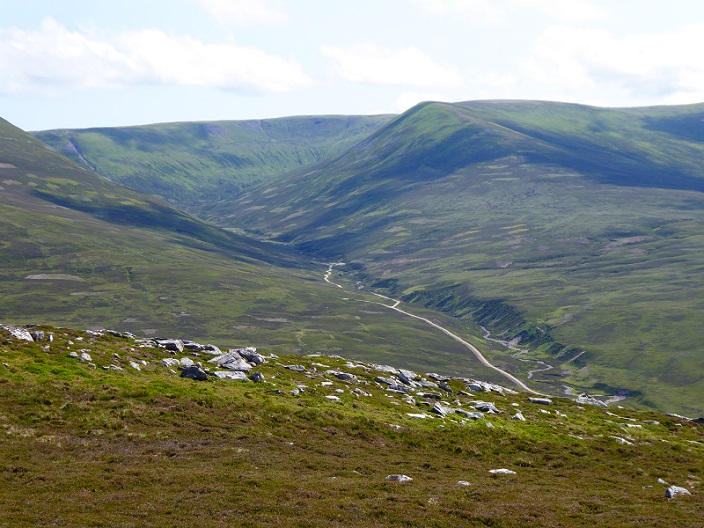
I have spent several days in the last couple of years in and around the Phoines Estate and, while not blogging about the estate itself, have included photos of way they manage the land in posts about muirburn madness (see here) and the politics of muirburn in the National Park (showing the state of the ground by the A9 in Glen Truim (see here). A very high proportion of land on the estate is subject to intensive grouse moor management, adding to the climate and nature emergencies and is clearly inappropriate for a National Park.
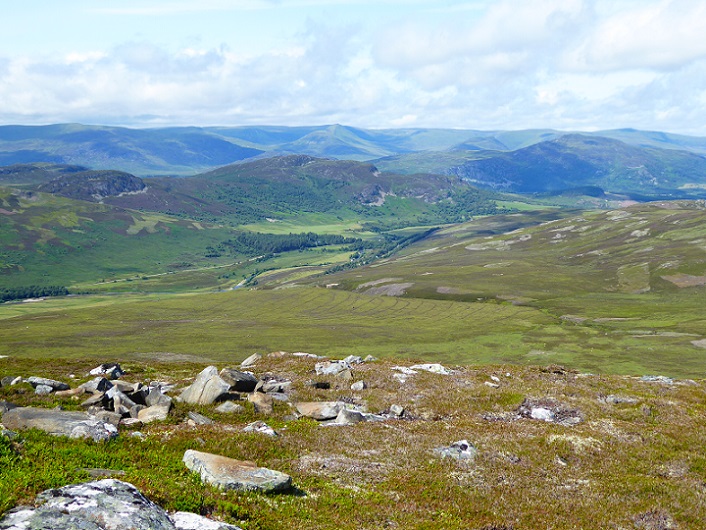
In March, my eye was caught by this extract from OneKind’s annual report on snares (see here):
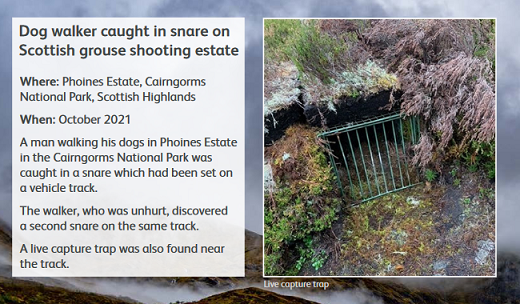
I had no idea who owned or managed the Phoines Estate and the report prompted me to investigate a little further. I found that the Phoines Estate, appears to be owned by a self-professed philanthropist.
How, I asked myself, can someone profess to care about people but treat wildlife and the natural environment in this way?
The ownership of the Phoines estate
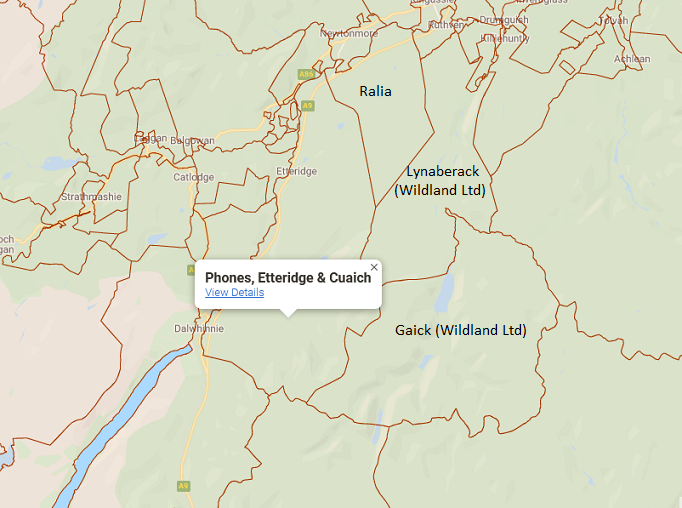
Phoines basically occupies a swathe (22,000 acres) of land east of the A9, extending from Dalwhinnie northwards to Ralia near Newtonmore. The map showing the estate’s boundaries (see here) is on the Cairngorms National Park Authority (CNPA) website but when you click the “View Details” there is no further information about who owns the estate. The estate has not been sold recently, so no information about its ownership is readily available on the Land Registry either.
I turned therefore to Andy Wightman’s Who Owns Scotland website which records that in 2002 the estate was owned by Michael J Samuel. I could find no media coverage about the estate’s ownership from a google search but I did discover that in 2019 a Michael Samuel from the Phoines Estate offered a day’s roe deer stalking in the Heather Trust’s annual fundraising auction (see here).
There is also a Phoines website, which refers to Phoines Lodge grouse moor, Withycome pheasant shoot on Exmoor and Mells Park pheasant shoot in Somerset “as a private collection of outstanding estates for fields sports and sporting holidays”. A check on Companies House (see here) shows that Michael John Samuel is a Director for a host of companies whose registered address is Mells Park House, Mells Park, Mells, Frome, Somerset. All this strongly suggests that Mr Samuel still owns Phoines, if not directly then possibly through one of the Samuel Family Trusts of which he is a trustee (Hon A.G. Samuel Charitable Trust; Michael Samuel Charitable Trust; Col. W.H Micholls Trust; Peter Samuel Royal Free Hospital Trust; Peter Samuel Charitable Trust (see here)).
It is to Scotland’s shame that so many barriers are still placed in the way of finding out who actually owns the land, whether within our National Parks or outside of them, and that often – as in this case – it is very difficult to say with certainty who is ultimately responsible for how a particular piece of land is being managed.
The management objectives of the Phoines estate
The CNPA at one time encouraged estates to produce management statements which it then published on its website along with the estate map. But when you click on the map for Phoines there is no further information.
Another way of discovering how estates are managed is to try searching the Scottish Forestry website to see if there is a Long Term Forest Plan. Unfortunately, in the absence of a decent map based data base which links landholding to plans and grants, trying to find whether such information exists is like searching for a needle in a haystack. In the case of Phoines, after 30 minutes I gave up, although there are planted areas on the estate which are likely to have been paid for out of the public purse.
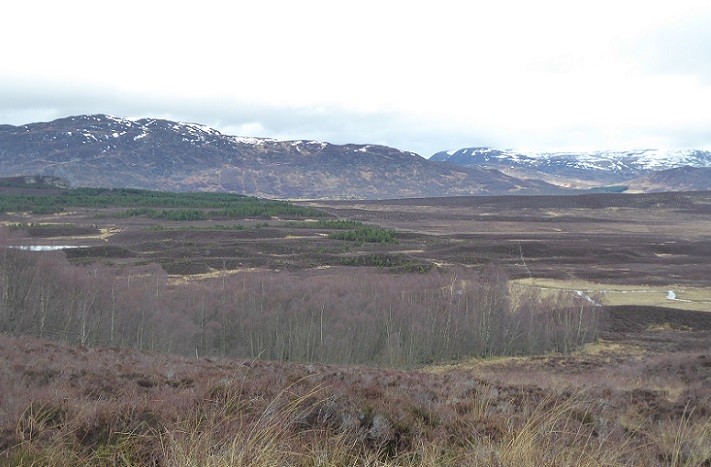
In the absence of good information from our public authorities, I turned to the Phoines Estate website (see here). This is all about shooting: “The first drive of the Corrie is one of the most challenging grouse drives in the world.”
 The author appears to have been carried away by the hype and to have forgotten to check their spelling. While Phoines extends to the summit of two Munros, Meall Cuaich and Carn na Caim, neither is much higher than 3000ft. Rather than “five spectacular corries each over 3000 ft” there is possibly one, Coire Cam below the summit of Carn na Caim, which reaches this height. That is probably just as well as the prospective shooter is unlikely to find “waled up grouse” at that altitude, which is normally the preserve of the Ptarmigan.
The author appears to have been carried away by the hype and to have forgotten to check their spelling. While Phoines extends to the summit of two Munros, Meall Cuaich and Carn na Caim, neither is much higher than 3000ft. Rather than “five spectacular corries each over 3000 ft” there is possibly one, Coire Cam below the summit of Carn na Caim, which reaches this height. That is probably just as well as the prospective shooter is unlikely to find “waled up grouse” at that altitude, which is normally the preserve of the Ptarmigan.

Unfortunately, not even these beautiful birds whose continued presence in Scotland is at risk due to global warming, are safe on the Phoines Estate. The William Powell “sporting” website (see here) reveals that mid-season Ptarmigan Package “can offer, if stocks allow, the rare opportunity to shoot walked-up Ptarmigan. The anticipated bag of Ptarmigan would be one brace per gun, with a maximum of four guns, priced at £850 per gun.” This in what is supposed to be a National Park.
The Phoines website has a short section on Conservation (see here) which claims that “Managing sporting estates and rural conservation go hand in hand” and that “Our teams work tirelessly to maintain a carefully balanced eco system on all of the estates to help nature thrive”.

x
The Caledonian National Park! Imagine that, sheep roaming free!
One wonders how much agricultural subsidy the estate has received for these sheep (see below). They are used to mop up ticks that might otherwise infect the artificially high numbers of red grouse, and help ensure that where-ever ground is burned, all the more palatable plants and trees get eaten and only heather returns.
William Powell appear to be involved in the management of the estate and a statement on their website is revealing:
“Highland Deer stalking is possible at Phoines Lodge on the hill ground for both Red and Roe deer, with a maximum of two rifles per outing. The Estate offers the most beautiful location to stalk both species of deer. However, as a result of the challenging environments, the trophy quality of the stags and bucks is poor.”
Far from nature thriving, as the Phoines website claims, the deer are in poor condition. This is not, however, purely attributable to the challenging environments but is also intricately linked to the number of deer and the availability of land to graze in winter:

A huge area of the Phoines Estate, both the grouse moor and the woodland used for pheasant shooting, is enclosed by a fence designed to keep deer out:
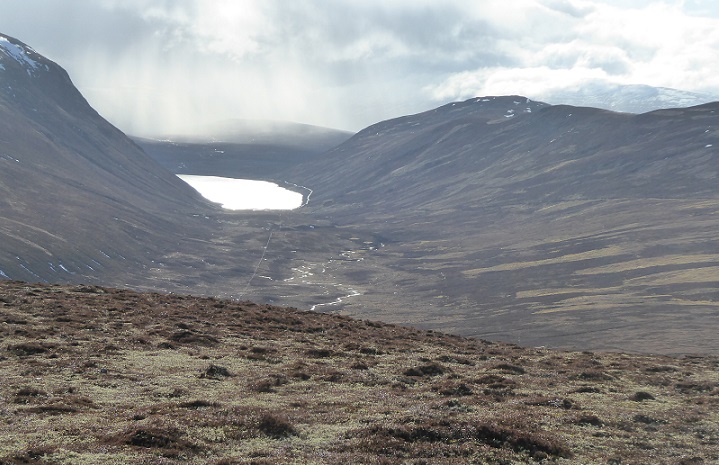
The deer fence runs all the way along the boundary between the Phoines and Ralia estates before dropping down to the glen above Loch Cuaich. Effectively, the fence excludes the deer that live on the higher parts of the estate from using the lower parts in winter. But even if they manage to cross it – fences deteriorate quickly and drifting snow can create crossing points in winter – deer are then faced with an unpalatable heather monoculture and further fencing around the woodland.
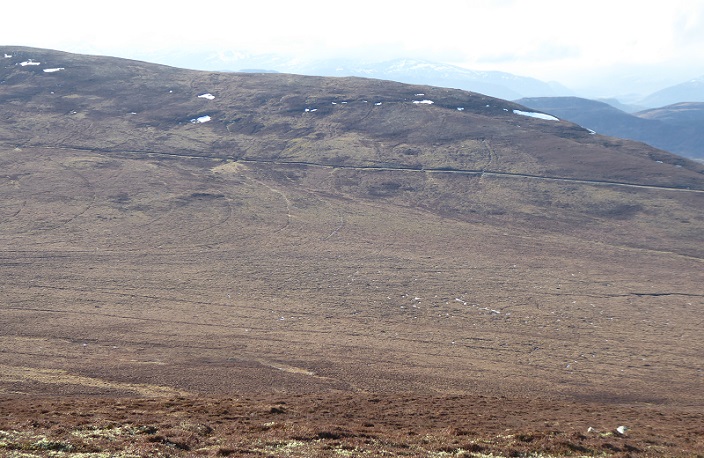
Michael J Samuel MBE – the apparent owner of Phoines
The entry in wikipedia describes Michael John Samuel, as a philanthropist (see here). He has had a long involvement in the Anna Freud Centre, is chair of the trustees and appears to write fairly regularly about children and mental health (see here). He is also known for having set up Full Fact (see here) – a UK precursor to the Ferret’s Fact Service (see here) – which he helps fund through the M J Samuel Charitable Trust (£17,500 in 2021 (see here). Full Fact does some very good work exposing lies and misinformation issued by politicians and others.
To put this amount in perspective, Michael Samuel’s Wikipedia entry shows that “between 2009 and 2019 he has donated £160,000 to the Conservative Party, according to Electoral Commission records”
Among all the information available about the Hon Michael Samuel’s good work, I could find nothing to indicate that he appears to own a large chunk of the Cairngorms National Park. It is a shame that this information is not more public because in 2013 the same Michael Samuel was caught speeding at 104mph along the A9 and, after unsuccessfully trying to use his charitable work as a means of keeping license, made the following plea (see here):
“Solicitor Greg Smith, defending Samuel, said: “He is deeply embarrassed and ashamed. He was driving a hired vehicle, which was unfamiliar to him and on a road unfamiliar to him“.
Really?
Time that the public were given the full facts about landownership
Full Fact checks claims that are made about the environment. I was interested to discover that in February 2019 they had considered the question “Does the government subsidise grouse shooting” (see here) in response to a Facebook post that claim Theresa May had increased taxpayer subsidies for her wealthy mates’ sport of grouse shooting from £45m to £84m a year in England.
The fact check concluded that while in 2015 subsidies in England were increased from an average of around £30 per hectare up to around £56 per hectare, the figure of £84m was probably a result of the writer overestimating the amount of land devoted to grouse moor. The really important point however was:
“We asked The Department for Environment, Food and Rural Affairs for the total amount of subsidy received by grouse moors. They said they didn’t have a breakdown of subsidies received by grouse moors. Nor did they have a breakdown of the amount received by moorland farmers.”
The position is no different in Scotland where the Werritty Review into Grouse Moor Management made no attempt to quantify the amount of subsidy received by the owners of grouse moors. If Full Fact had really wanted to find out the answer to this important question, perhaps they could have asked the Hon Mr Samuel, as one of their trustees, how much if anything he had received for Phoines Estate?
Unfortunately, there is almost no means in Scotland by which a member of the public can find out what public subsidies a landowner like Michael Samuel may have received. The DEFRA Rural Payments database did in 2019 and 2020 allow one to search for the names of those people or organisations who received payments under the Common Agricultural Policy (see here). It is a scandal that this information is not linked to the landholding so unless you happen to know the name of the person or organisation in which the claim was submitted, it is very difficult or impossible to find out what landowners are receiving from the public purse. The fact that no payments come up if you search on Phoines means nothing.
What I did find, however, is that a body called Mells Park Trust did receive £201,518.95 in 2020 and it not only appears to share a name with Mr Samuel’s other interests at Mells Park it was once linked to Mr Samuel through Quercus Investments Limited Liability Partnership (now dissolved):
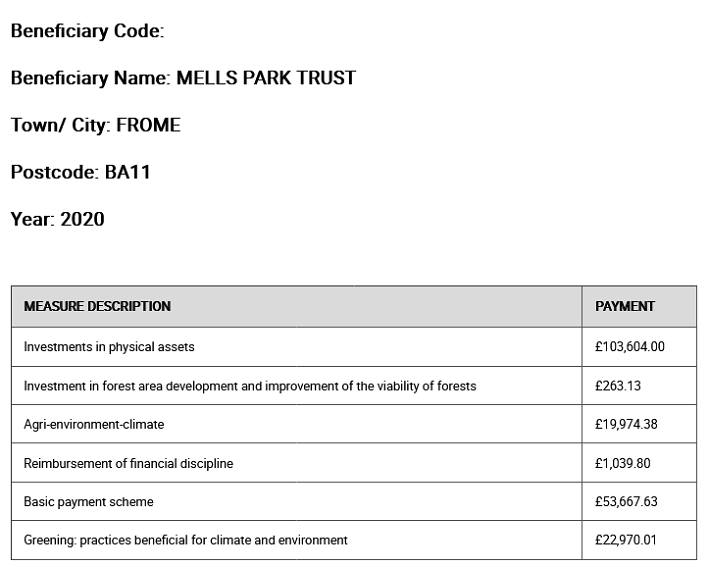
£22,970.01 for greening practices. If Michael Samuel’s is a beneficiary of this payment, as appears likely, it illustrates that we need to joined up approach to rural payments not just in Scotland but across the UK.
Why pay someone for greening in England while they are still being allowed to manage part of a National Park in Scotland in such a destructive way?
What needs to happen?
When I started researching this post, I was half-hopeful that the fact that Michael Samuel professes to be a philanthropist might be used to persuade him to change how Phoines Estate is managed (if indeed he is the beneficial owner). After all, people and the natural world are interdependent and rationally it is difficult to care for one without caring for another.
Unfortunately, however, the sporting mindset has little to do with rational land-management or the good of humanity but is steeped in class and power as is epitomised by this photo from the Phoines estate website:

Who, one might ask, is being used here, the people or the wildlife?
Just like at Balmoral and Delnadamph, whose royal owners profess to care deeply about the natural environment while trashing the land they own in the name of sport (see here), so I suspect it is at Phoines.
While I would be delighted if Michael Samuel was open to reason, with the climate and nature emergencies we don’t have the time to wait and see which sporting estate landowners, if any, might be amenable to change. If we are serious about addressing those emergencies we need complete transparency about land ownership, complete transparency about the public funds landowners receive and mechanisms to change how the land is managed. The Cairngorms National Park will never achieve its desired goal of landscape scale conservation until it proactively intervenes to change the way that estates like Phoines are managed.
The opportunity is immense: with Wildland Ltd managing the land along part of its eastern boundary and Standard Life having bought up Ralia to the north, if muirburn ceased, the deer fencing was removed and deer numbers reduced to 2 per square kilometre the Phoines sporting estate, like many others, could be transformed within a few years. That would be good for carbon, good for people and good for wildlife.

Go on then let you start.
You tell us about your land ownership, and then tell us about the state of your land.
How many species do you carry on your land?
Do you derive your income from your land?
Do you provide employment for other from your land?
Do you provide affordable housing on your land?
Tell us about your carbon mitigation or reduction management
Oh and what about the value of your land.
was passing through Drumochter pass today on the A9 and noticed a small flock of sheep grazing along the infill of the power line access.
One thing that struck me about the photos of the rock and stones in the burned areas was that many are very light coloured. It is difficult to be sure just how light coloured they are but if they are as light coloured as they seem then this is significant. Rocks and stones normally have a subdued grey/green colour due to the growth of mainly lichen on them over many years. A hot fire burns this off revealing the lighter colour of the stone below. The significance of this is that, if the fire is that hot, it will also have depleted the seedbank in the soil below which you are relying on to regenerate plant growth. It is a common problem in miurburn.
Aye, colloquially ‘grazed tae hell and burnt tae hell’ Highly symbolic of the Victorian Edwardian Dystopia regime